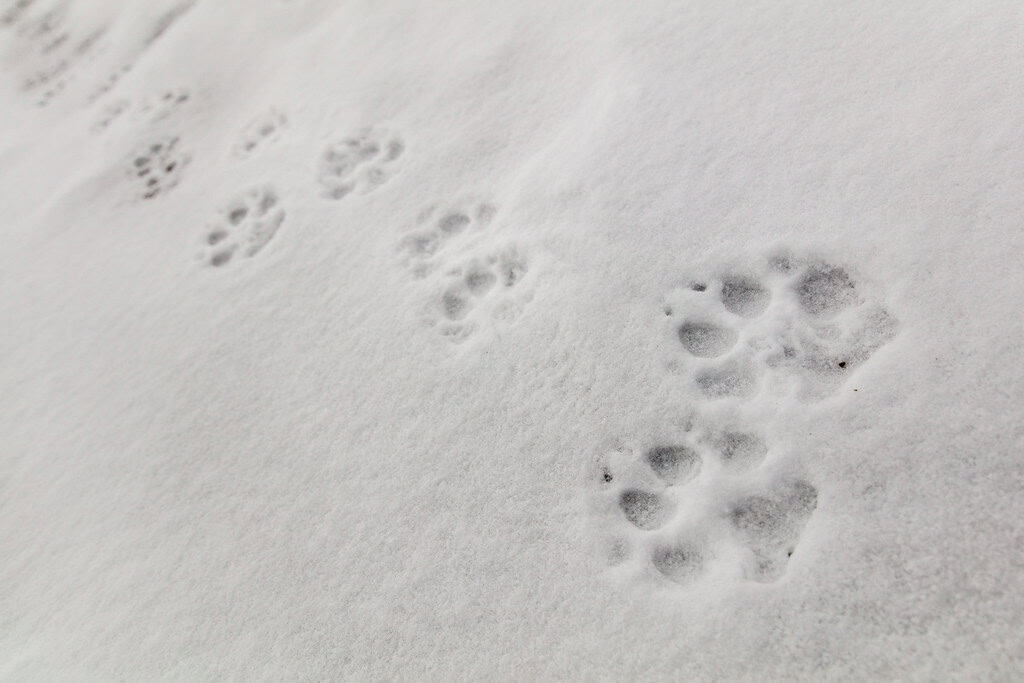For outdoor enthusiasts, wildlife biologists, and trackers, the ability to distinguish between wolf, dog, and coyote prints can provide critical information about which animals are present in an ecosystem. All three species belong to the Canidae family and share similar track characteristics, making identification challenging for novices. However, with careful observation and knowledge of key differences, one can learn to differentiate these tracks reliably.
Canid tracks typically show four toe pads arranged in a roughly circular pattern around a larger, triangular-shaped heel pad (also called the metacarpal or plantar pad). All canids display claws in their tracks, unlike felines which usually retract their claws while walking. The size, shape, and arrangement of these elements, along with the animal’s walking pattern, provide the distinguishing features that help identify the track-maker. Weather conditions, substrate type, and the age of tracks also influence appearance, adding complexity to the identification process.
Size Matters: Wolf Tracks vs. Smaller Canids

The most obvious distinguishing feature of wolf tracks is their impressive size. Adult gray wolf prints typically measure 4-5 inches long (excluding claws) and 3.5-5 inches wide, significantly larger than those of coyotes or most domestic dogs. Coyote tracks generally measure 2.5-3.5 inches long and 2-2.5 inches wide, making them substantially smaller than wolf tracks. Domestic dog prints vary greatly depending on the breed, but most fall somewhere between coyote and wolf sizes, with many medium-sized dogs leaving tracks measuring 3-4 inches in length.
When examining a track, it’s important to measure the actual pad impressions rather than any distortion caused by slippage or substrate conditions. A good practice is to measure several prints from the same animal to establish an average size, as individual prints may vary. Also, remember that juvenile wolves can leave tracks similar in size to those of adult coyotes or medium-sized dogs, which can complicate identification based solely on size. In these cases, additional characteristics must be considered.
Shape and Symmetry of Wolf Prints
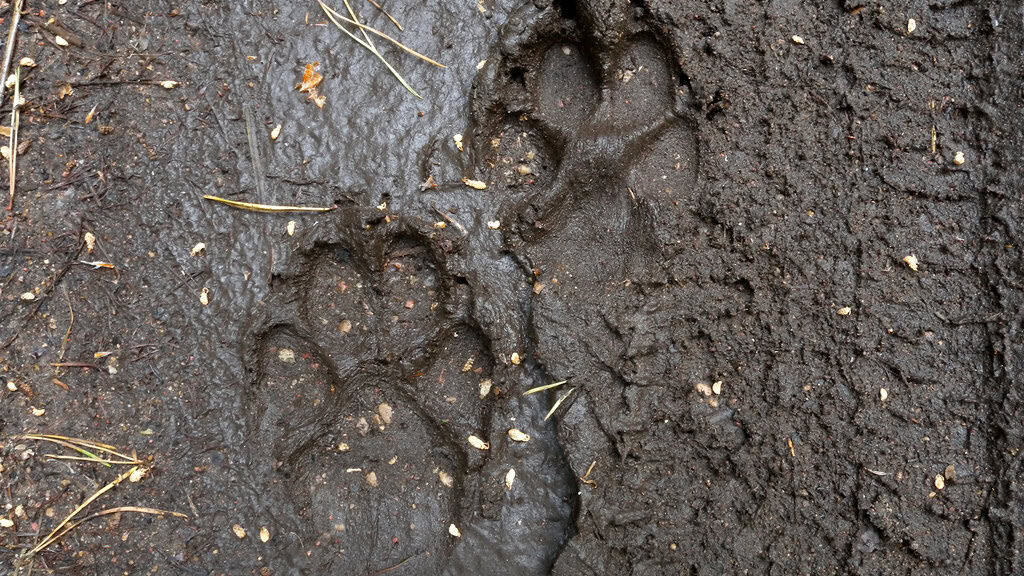
Wolf tracks display a distinct oval shape and remarkable symmetry that differs from both dog and coyote prints. The overall track is longer than it is wide, with a clear, well-defined outline when impressed in suitable substrate. One of the most distinguishing features is the symmetrical arrangement of the toes, with the two middle toes (digits 3 and 4) positioned almost exactly parallel to each other and extending slightly farther forward than the outer toes. This creates a very balanced, symmetrical appearance that contrasts with the often asymmetrical toe placement seen in dog tracks.
The outer toes of a wolf track (digits 2 and 5) are positioned evenly on either side and don’t splay outward as much as those in dog tracks. This compact, neat arrangement reflects the wolf’s evolution as an efficient long-distance traveler that needs to conserve energy. The overall impression gives wolf tracks a more organized, “professional” appearance compared to the often messier, more splayed configuration of domestic dog prints. Coyote tracks share some of this neatness but on a smaller scale, making the wolf’s symmetrical, oval-shaped print a useful identification characteristic.
Toe Pad Arrangement and Positioning

The specific arrangement of toe pads provides key clues for distinguishing wolf tracks from other canids. In wolf prints, the two leading toes (the middle toes) sit closely together and extend forward approximately the same distance, creating a clear, uniform appearance. These toes rarely splay apart widely, unlike in many dog breeds. The outer toes in wolf prints are positioned relatively close to the middle toes and don’t spread outward dramatically. This compact toe arrangement creates a track that appears neat and efficient, reflecting the wolf’s natural gait as a wilderness predator evolved for energy-efficient movement.
By contrast, domestic dog tracks often show more variation in toe positioning, with toes frequently splayed outward in different directions. Many dogs show greater spacing between all toes, creating a looser, less organized print. Coyote toe arrangement is somewhat similar to wolves but on a smaller scale, with slightly more splaying than wolves but less than most dogs. When examining toe pad arrangement, it’s also worth noting that wolf toe pads tend to be more oval-shaped and pointed at the front, while many dog breeds have rounder toe pads. These subtle differences in toe pad shape and arrangement are particularly valuable for identification when track size alone is insufficient.
The Metacarpal Pad: A Telling Difference
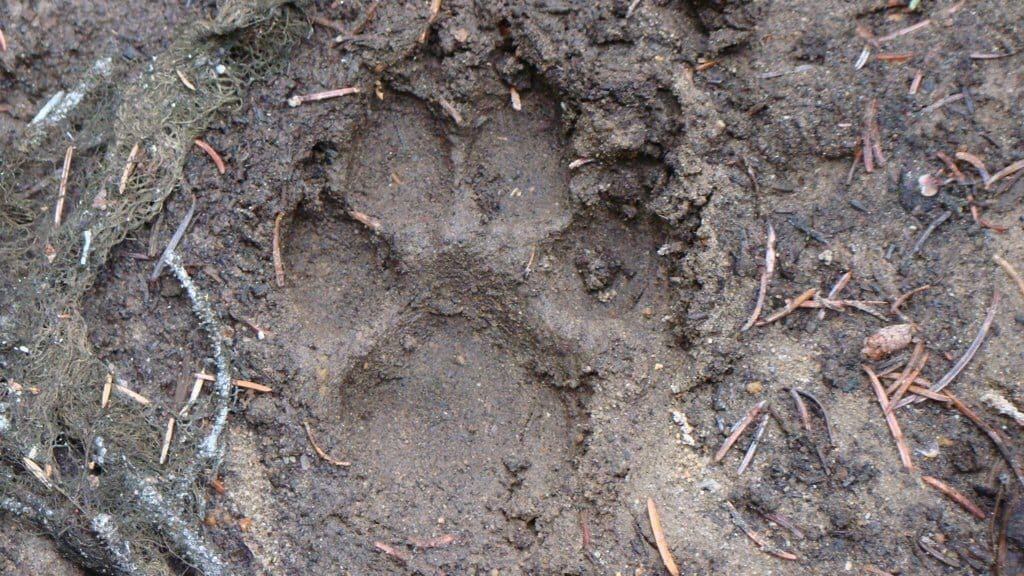
The metacarpal pad (also called the heel or plantar pad) at the rear of the track offers significant clues for distinguishing wolf prints from other canids. In wolf tracks, this pad is relatively large, accounting for about one-third of the total track length, and has a distinctly triangular shape with a straight front edge and two lobes at the rear. The front edge of a wolf’s metacarpal pad typically shows a clear chevron or V-shape, with the point directed forward. This characteristic shape is more pronounced in wolves than in coyotes and many dog breeds.
The proportional size of the metacarpal pad relative to the toe pads also differs across species. In wolves, the metacarpal pad is proportionally smaller compared to the toe pads than in many domestic dogs, where the heel pad often appears larger and more prominent within the overall track. Coyote metacarpal pads are similar in shape to wolves but smaller and less robust. Additionally, the metacarpal pad in wolf tracks frequently shows two distinct lobes at the rear edge, forming an inverse chevron shape. This feature, while sometimes visible in coyote tracks, is typically more pronounced in wolves and less defined in most domestic dogs.
Claw Marks and Their Significance
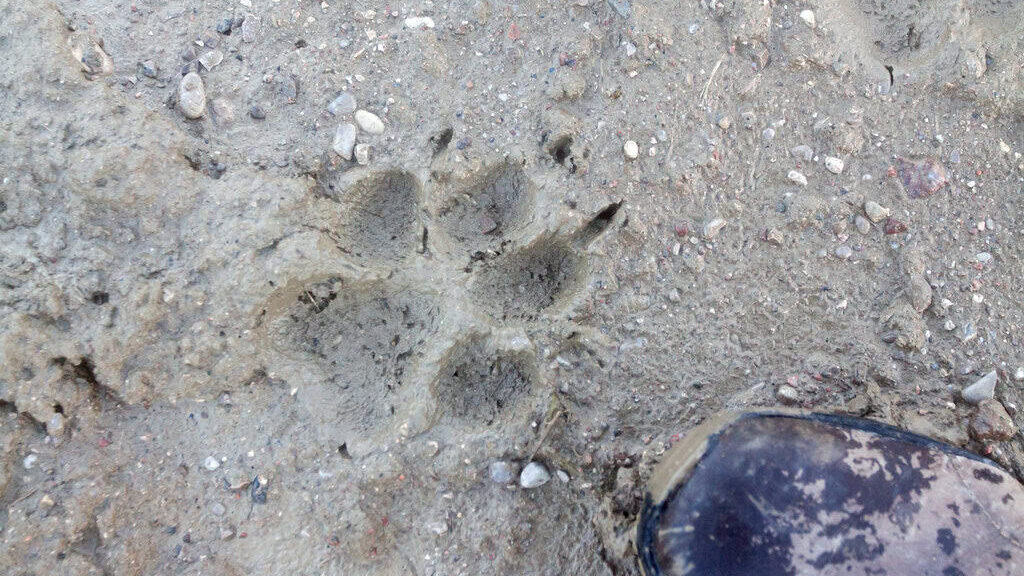
Claw marks provide another distinguishing feature in canid track identification. All canids leave visible claw marks in their tracks, but the appearance and positioning of these marks vary between species. In wolf tracks, claw marks typically appear as small, sharp indentations extending about 0.5-0.75 inches beyond the toe pads. These claw marks are usually straight and point forward in the direction of travel, aligning with the axis of each toe. Wolf claws tend to leave relatively narrow, defined impressions that reflect their function as traction devices for a wild predator rather than the often more blunt or varied claw marks seen in domestic dogs.
Domestic dog claw marks frequently show more variation, often appearing wider, blunter, or more irregularly positioned than those of wolves. Some dog breeds with longer claws leave exaggerated claw marks that extend significantly beyond the toe pads. Dogs that spend considerable time on hard surfaces like concrete may have worn, blunt claws that leave less distinct impressions. Coyote claw marks are similar to wolves’ but typically smaller and sometimes more delicate in appearance. The position of claw marks relative to the toe pads—particularly whether they point straight forward or splay outward—can provide additional clues to distinguish between wolf, dog, and coyote tracks.
Negative Space and Track Density
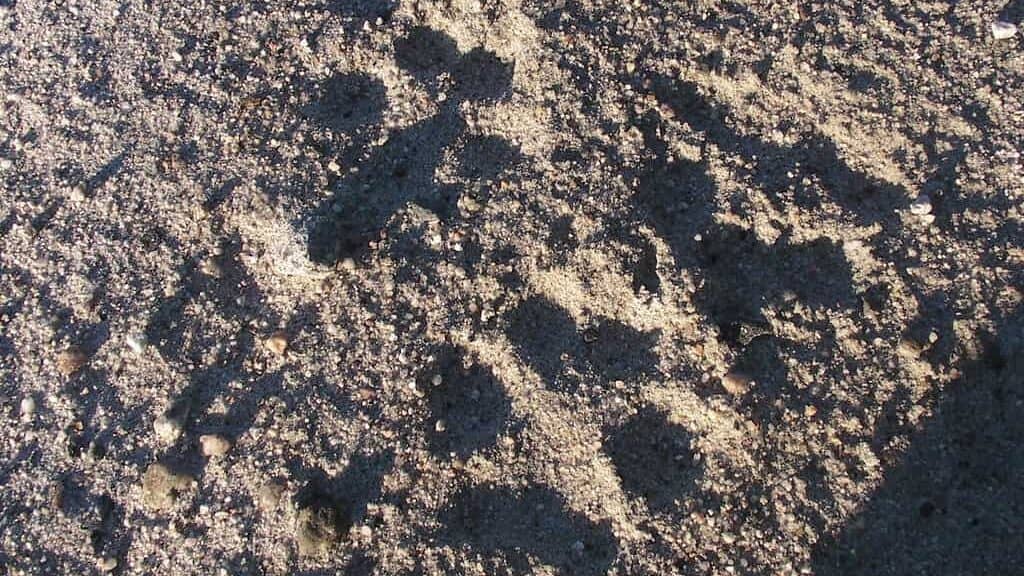
The negative space within a track—the unimpressed areas between the pads—offers subtle but important distinguishing characteristics. Wolf tracks typically display less negative space than domestic dog tracks, reflecting their more compact, efficient foot structure. In a wolf print, the four toe pads and metacarpal pad fit together neatly with minimal gaps between them. This creates a track with higher “density” or “fullness” compared to many dog tracks, where the pads often appear more spread out with larger spaces between them. This track density reflects the wolf’s evolution as an efficient long-distance traveler that needs to conserve energy and maintain speed over varied terrain.
Domestic dogs, especially breeds not developed for endurance running, frequently leave tracks with more negative space, creating a more open or loose appearance. The X-shape that can be visualized by connecting opposite toe pads across the center of the track is typically smaller and tighter in wolf tracks than in many dog tracks. Coyote tracks show an intermediate level of negative space—more compact than most domestic dogs but sometimes slightly less dense than wolf tracks. The amount of negative space becomes particularly useful for distinguishing between juvenile wolf tracks and adult coyote or dog tracks of similar size.
Track Patterns and Gait Analysis
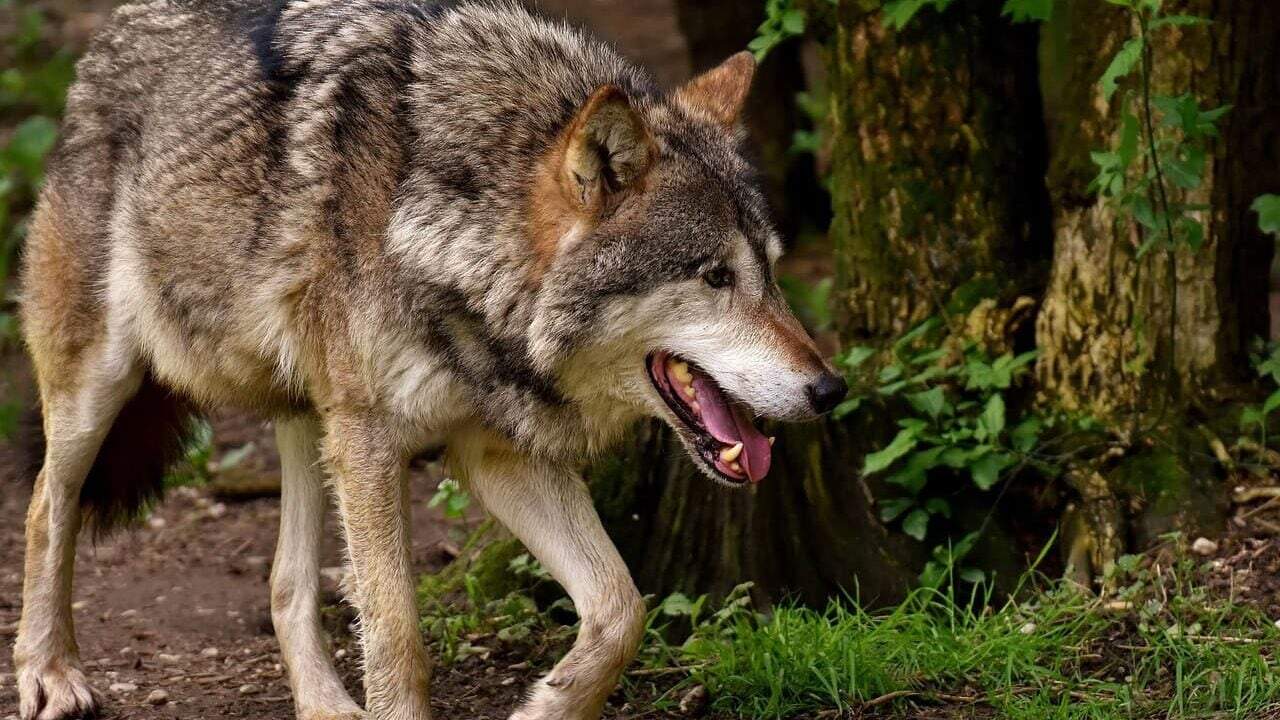
Beyond individual track characteristics, the pattern of multiple tracks provides crucial context for identification. Wolves typically travel in a purposeful, energy-efficient manner, resulting in track patterns that appear orderly and direct. The most common wolf gait is a trot, where diagonal pairs of legs move together, creating a neat, relatively straight trail with tracks often falling in an almost straight line. This pattern, called “direct register,” means the hind foot often lands exactly or almost exactly in the print left by the front foot on the same side. This direct register walking is particularly characteristic of wolves and indicates their natural efficiency of movement.
Domestic dogs frequently show more variability in their travel patterns, often wandering, zigzagging, or changing gaits more frequently than wolves. Many dogs do not consistently direct register when walking or trotting, instead showing staggered or offset patterns where the hind foot lands near but not directly in the front foot’s print. Coyotes, like wolves, often direct register, but their trails may show more meandering behavior than wolf trails, particularly when hunting small prey. Track pattern analysis is especially valuable when trying to distinguish between a large domestic dog and a wolf, as the more consistent, direct movement pattern of wolves contrasts with the often more random, playful, or inefficient movement of many domestic dogs.
Seasonal and Habitat Variations

Track appearance can vary significantly with seasonal conditions and habitat type, adding complexity to the identification process. In winter, wolves develop a thicker coat of fur between their toe pads, which can make their tracks appear fuller and sometimes slightly larger than in summer. This adaptation provides insulation and improved traction on snow and ice. Wolf tracks in snow may also appear less distinct in terms of individual pad impressions but can show clearer overall size and gait patterns. During summer months, the fur between the pads is reduced, potentially making the negative space between pads more visible.
Habitat type also influences track characteristics. Wolves traveling across sandy soil may leave tracks that appear larger due to sand slippage around the edges, while those in firm clay might show more detailed pad and claw impressions. Tracks in mud can provide excellent detail but may distort as the animal’s foot pulls away. Regional variations exist as well—wolves in northern regions with deeper snow tend to have proportionally larger feet than those in more temperate areas, an adaptation that functions like natural snowshoes. When identifying tracks, it’s important to consider these seasonal and habitat factors rather than relying solely on measurements or appearance that might be influenced by environmental conditions.
Common Misidentifications and Pitfalls

Several common pitfalls lead to misidentification of canid tracks. One frequent error is mistaking large dog tracks for wolf prints, particularly tracks from breeds like German Shepherds, Alaskan Malamutes, or Great Pyrenees. Size overlap between juvenile wolves and adult coyotes or medium-sized dogs can also cause confusion. Track distortion presents another challenge—melting snow, mud, or sand can make tracks appear larger or less defined than they actually are, potentially causing dog tracks to be misidentified as wolf prints. Conversely, partially filled or eroded wolf tracks might be mistaken for coyote prints.
Another common mistake is focusing too heavily on a single track rather than examining multiple prints and the overall track pattern. Individual tracks may be atypical due to substrate conditions or the animal’s movement at that specific moment, while a series of tracks provides a more reliable picture. Age of tracks also matters—older tracks that have been subjected to weather conditions often lose their defining characteristics. Perhaps the most reliable approach to avoid misidentification is to consider multiple characteristics together—size, shape, pad arrangement, claw marks, negative space, and track pattern—rather than relying on any single feature that might be ambiguous in isolation.
Tools and Techniques for Track Identification

Successful track identification relies on both proper tools and methodical observation techniques. Essential equipment includes a small ruler or measuring tape for accurate size measurement, a camera to document tracks from multiple angles, and a small brush for gently cleaning debris from track impressions without damaging them. Some trackers carry a small notebook with reference diagrams of typical wolf, coyote, and dog tracks for immediate comparison in the field. For more detailed analysis, track casting using plaster of Paris or dental stone can preserve the track for later study, though this requires practice to execute properly without damaging the original impression.
Effective tracking techniques involve examining multiple characteristics systematically. Start with measuring length and width of several tracks to establish average size. Next, observe the overall shape, symmetry, and toe pad arrangement. Examine the metacarpal pad shape and proportional size, noting any distinct lobes or chevron shapes. Check claw mark position, shape, and length. Assess the negative space between pads and the track density. Finally, step back and analyze the pattern of multiple tracks, looking for consistent gaits and direct register walking. This methodical approach, combined with knowledge of the distinguishing features discussed previously, significantly increases accuracy in differentiating wolf tracks from those of dogs and coyotes.
Distinguishing wolf tracks from those of dogs and coyotes combines both scientific knowledge and practiced observation skills—truly an art informed by science. The key differences discussed—from size and symmetry to pad arrangement and negative space—provide a framework for identification, but field experience remains invaluable for developing reliable tracking abilities. Each track tells a story about the animal that made it, reflecting its evolutionary adaptations, movement patterns, and ecological role. For wildlife managers, researchers, and outdoor enthusiasts, the ability to correctly identify wolf tracks contributes to our understanding of these apex predators and their interactions with ecosystems.
As wolf populations continue to recover in many regions, the importance of accurate track identification grows, both for scientific monitoring and for public education about wolf presence and behavior. While distinguishing between canid tracks can be challenging, the rewards of correct identification extend beyond mere classification to a deeper connection with the natural world and its inhabitants. Whether you’re a wildlife professional or simply a curious nature lover, developing the skill to recognize the distinct characteristics of wolf tracks enhances your outdoor experiences and contributes to a greater appreciation of these remarkable predators and their wild relatives.
- Why Elephants Mourn Their Dead Just Like Humans Do - August 21, 2025
- Where to Watch Wild Horses Run Free in the U.S. - August 21, 2025
- The Psychology Behind a Dog Breed’s Bark - August 21, 2025

